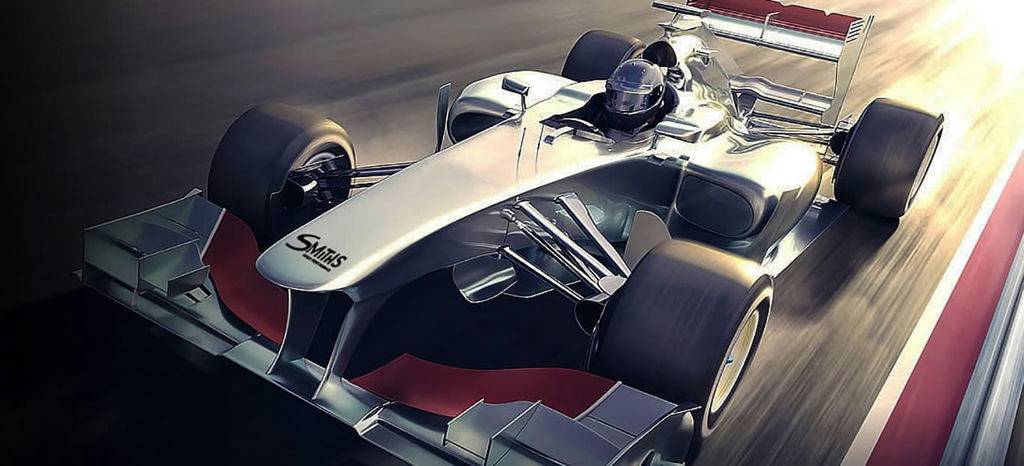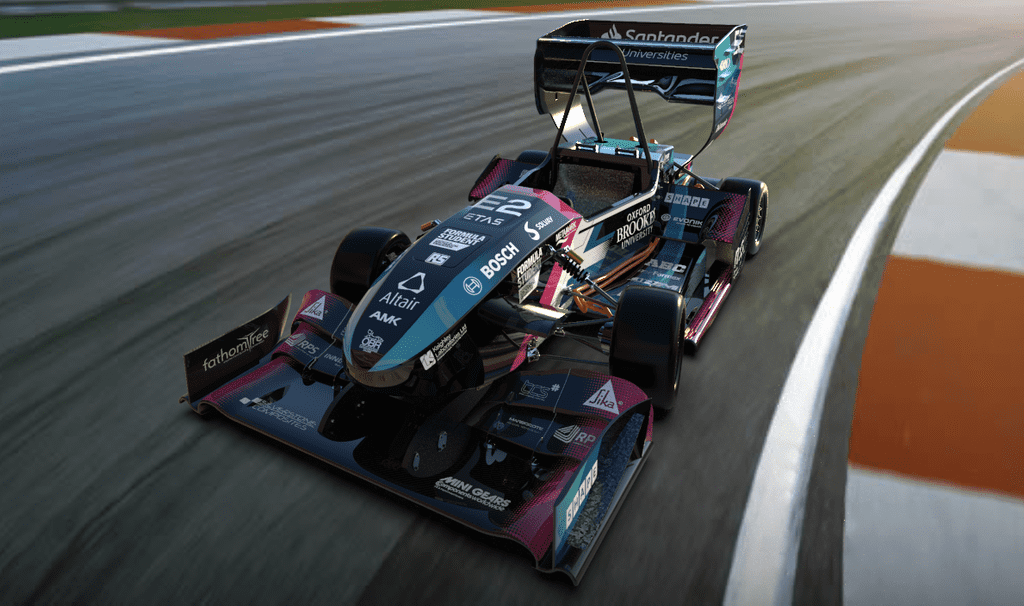That the automotive industry has been one of the earliest to experiment with and adopt 3D Printing is old news. Search ‘3D Printing’ and ‘Automotive’ and Google will throw atleast one fresh press release of a car company using 3D Printing per day. Or better yet, scour through the news section of our website and you will find one too many of them.
The purpose of adopting 3D Printing may not always be integration in the current manufacturing technology. Yes, many companies are already doing it, like BMW’s systematic approach to adopt it across all its industrial processes. It can be used for various purposes. Talk about research and development and there are companies creating lighter diesel engines, or designing aesthetically enriching exterior parts.
Old car restorations is a new avenue that is exploring 3D printing. For example, Nissan recently partnered with HP on its NISMO Heritage Parts program to restore its R32 Nissan Skyline GT-R and others like it. Most of us are well aware of celebrity Jay Leno’s classic car collection. Recently, he partnered with Stratasys to custom print parts for his collection. Even making manufacturing sustainable is possible with 3D Printing – just like Ford & HP collaboration to transform 3D waste into auto parts.
All the above approaches involved car parts. Few even use it to improve their manufacturing tools and production line. Audi recently did just that. The only limitation to application purpose of 3D Printing – is human imagination.
So, why am I pin-pointing the car racing industry when we are well aware that the automotive industry loves 3D Printing technology? What got me thinking about the car racing industry is the number of developments involving car racing companies and 3D Printing in the last one year. Read on and you will know what I mean.
3D Printing Parts
As mentioned earlier, this purpose for adopting 3D Printing is very obvious. But these developments pertaining to race car companies do stand out.
McLaren Artura V6 Engine Produced Using 3D Printed Cores

A new manufacturing technology adoption comes with its own set of risks. And that is true even for 3D Printing technology. Hence a safe bet would be to use it for manufacturing exterior parts or parts of lesser importance. But when McLaren uses it to manufacture one of the most important engine parts – the core in its supercar, the Artura, it points out the technology’s genius.
Ambitious targets set in every area, be it weight, performance, driver engagement, efficiency, agility, refinement, quality and usability when designing the car. With 3D Printing, every target was achieved.
Alfa Romeo Racing ORLEN Uses 304 Additively Manufactured Parts In The Newly Unveiled C41

Alfa Romeo Racing ORLEN Team recently launched its Formula 1 2021 contender, the C41. The ceremony took place at the Grand Theatre in Warsaw, Poland. And like most, it has 3D Printed parts in it. But one car having over 300 additively manufactured parts? That’s definitely a new high in adopting 3D Printing.
This benefitted the company in not only improving the car performance but also in cost saving with over 90% cost reduction on some parts compared to the one manufactured using traditional manufacturing.
MINI Electric Pacesetter, A FIA Formula E Safety Car, Features 3D Printed Parts

Even electric car racing is not far behind. MINI Electric Pacesetter, the new Safety Car for the ABB FIA Formula E World Championship race series has also used 3D Printed parts.
As such, it connects the brand’s electrified future with the rich racing history of John Cooper Works. The car was created out of the new MINI Cooper SE as part of an unprecedented collaboration between MINI Design, BMW Motorsport, the FIA and the Formula E.
The car comes with a slew of 3D Printed parts – both, internal and external, including front and rear spats, rear spoiler and car seat pads.
Adoption In Other Departments
If the above 3 examples involved 3D Printing parts, this one is about adopting 3D Printing across the board
Team Penske Uses Stratasys 3D Printing To Speed Racing

One technology that Team Penske has fully embraced is additive manufacturing. They have adopted it even in departments not directly related to parts manufacture, like tooling and prototying and across different racing arms.
Since forming a technical partnership agreement with Stratasys in 2017, Team Penske has expanded its use of the 3D printing company’s FDM and PolyJet technologies for prototyping, tooling, fixturing, and end-use parts in cars and pit equipment. Stratasys has announced a multi-year technical partnership with Team Penske designed to bring 3D printing to all Team Penske NASCAR, IndyCar, and IMSA sports car teams.
New Deals & Partnerships
The past year saw many a deals being struck by car racing brands pertaining to 3D Printing.
Aston Martin Partners With DOMIN For A FAST Suspension

DOMIN, a hydraulic systems company, has patented a valve technology wherein twenty-five fluid galleries operate in unison to transport hydraulic fluid throughout the system, all of which are encased within a fully additive manufactured core.
Seeing the potential of this technology, Aston Martin, and the engineering specialists at Cranfield University have partnered with DOMIN to develop a world-leading suspension system within a demanding six-month timeframe using this technology. Aptly named FAST (full active suspension technology) this technology’s exceptional performance characteristics will distinguish the FAST unit from other active systems providing infinite variability in damping, with a step response as fast as 0.015 seconds, and all in a package weighing under 4kg per unit.
Williams Racing Announces Partnership With Nexa3D

Williams Racing announced a new partnership with Nexa3D, bringing the fastest polymer 3D printing to the world of Formula One.
Nexa3D’s NXE400 ultrafast photoplastic 3D printer will be available to manufacture functional wind tunnel parts for aero testing purposes. The company’s NexaX software will enable high-performance additive manufacturing processes using modern computation architecture to develop light-weighted parts and accelerate the file-to-part process.
With Nexa3D’s technology, Williams Racing will be able to quickly design and manufacture complex, light weighted parts in minutes, compared to hours with traditional manufacturing, while minimizing material usage and waste.
Smiths HP & Burloak Technologies Team Up To Supply 3D Printed Parts For F1 Race Cars

This particular deal is extremely interesting because it does not involve a car racing company at all. However, the partnership was struck to supply 3D printed parts in metals and polymers to the worldwide Formula 1 racing market.
While Smiths HP is a stock holder of advanced engineering material for car racing companies, Burloak Technologies is a 3D Printing Technology and materials company.
Research & Innovation
3D printing related research is being carried out by car racing companies not only on parts design and manufacturing front but also on the technology itself.
Innovative Electric Race Car Part Shows Potential For EBM In Automotive

The Oxford Brookes Racing (OBR) team explored the potential of additively manufacturing a complex and critical part that connects the suspension link, the brake mounts, the wheel, as well as housing the gearbox to the race car’s electric motor, in partnership with MTC Design.
“The collaboration case study project enabled demonstration of the full AM end‑to-manufacturing process; from a conception idea to design for AM, manufacture, inspection and post processing machining. The most exciting thing was working closely with MTC Design for Additive and process engineering experts to fully explore the EBM AM process capability, as well as disseminating the knowledge to Oxford Brookes racing team,” adds Mitchinson.
Sauber Engineering Gets Certification To Use Scalmalloy® In Its ALM Process

Many companies are even exploring new materials and innovative alloys for 3D Printing parts. Recently, Sauber Engineering (parent company of the the F1 racing team Alfa Romeo) received the certification to utilise Scalmalloy® in its Additive Layer Manufacturing (ALM) processes.
Scalmalloy®, an aluminium-magnesium-scandium alloy, is lightweight material with high strength characteristics, developed and patented by APWORKS GmbH and normally utilised in the aerospace industry, but with increasing applications in a wide range of fields.
The recently unveiled Formula One 2021 Contender, C41 was one of the first to benefit from this alloy. The C41 used 304 additively manufactured parts using its inhouse MetalFAB1 system, acquired from Additive Industries.
To conclude, the past year may have been a dampener on the manufacturing industry but 3D Printing came out as the knight in shining armour. It was this technology that came to the rescue when the medical industry faced an acute shortage of medical equipment in 2020. Seeing the tremendous potential of this technology, the car racing industry too, I am sure, is doing away with its skepticism in adopting it.
Head - Marketing at Indian 3D Printing Network. Communications is an integral part of an organisation. It is the image an organisation portrays to the intended target audience. Understanding the immense responsibility this puts on me and deliver accordingly has always been and will continue to be my objective.


